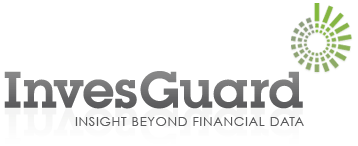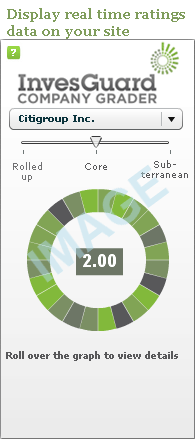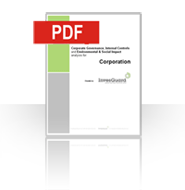January 14th, 2010
The focus this week has been on the big banks.
Wednesday was ‘bank bashing’ day over at the Financial Crisis Inquiry Commission. Unusually pertinent and pointed questions and as usual ambiguous, ‘beating around the bush’ answers characterized the session.
On another note, a WSJ article indicated a possible ‘one upmanship’ between Goldman and Morgan Stanley. Both banks tried to outdo each other and announce their earnings before the other. Apparently, there is some belief that the bank with the earliest earnings announcement ‘catches the worm’, interms of a stock price rally. Talk about being hyper competitive….
Anyway, so here at InvesGuard we have also been doing our little bit of bank scrutiny in terms of their compensation data. Over the past two posts, we looked at JP Morgan as well as Bank of America and today we will be reviewing the profile of Goldman Sachs.
Instead of writing reams and reams on Goldman’s compensation practices, I thought it would be better if I just present this data and leave the analysis to you. The data sort of speaks for itself.
Compensation for 9 months ended 2009: $ 16712 million
Compensation for 9 months ended 2008: $ 11424 million
Increase in 2009 over 2008? : Of course (its Goldman we’re talking about, remember?)
Percentage Increase in Compensation : 46%
Number of employees for 9 months ended 2009: 31700
Average Per employee compensation (2009): $ 527,000
Average Per employee compensation (2008): $ 303,800
Ration of Compensation and benefits to Net Revenues (9months 2009): 47%
Revenue Change (9 months Year over Year comparison)
Investment Banking Revenues: Significantly lower
Trading and Principal Investments: Significantly higher by 108%
Asset Management and Securities Services: Lower
So what do analysts say about Goldman?
Out of 26 analysts surveyed, only 9 (less than half) had a strong buy recommendation, 7 had a ‘hold’ and 10 analysts recommended a ‘buy’. (Source: First Call / Thomson Financial)
InvesGuard Score:
Over extended directors, board independence issues coupled with poor Social and Environmental disclosures give Goldman an average rating. Look it up here.
Come January 21, (Goldman’s Quarter 4 earnings release), it should be interesting to see whether all the donations, charitable giving and some press coverage is enough to counteract the negative public perception of its earnings.
please wait...
Rating: 5.0/5 (1 vote cast)
Tags: bankers pay, Goldman Sachs
Posted in Earnings, Goldman Sachs, Uncategorized, company | No Comments »
November 25th, 2009
Over the past week or so, we have added 4 more companies ( PNC Financial , Capital One, US Bancorp and State Street ) to our database.
If you are an already registered subscriber, please log in and view these companies’ scores. Please click on the ‘Expand All’ link within each of the tabs that opens up the datapoints to reveal even more details. If you have any problems accessing any information drop me a line at comments@invesguard.com
If you are not a registered subscriber, I would urge you to complete the painless, FREE registration process. All the information is now freely available after a short registration process. Thank you.
3 out of these 4 newly uploaded companies (PNC Financial being the exception) have repaid monies borrowed under the TARP program. However, none of them have published details on how the money borrowed under TARP was allocated or used.
Why, you ask should they publish these details? Joe Nocera’s recent columnin the New York Times brought to light very succinctly, the lead, so to say, that Goldman (or as it is “affectionately” called the “Vampire Squid”) received by accepting the TARP money. As Joe Nocera puts it, “………………That $10 billion of TARP money meant that Goldman Sachs could free up an additional $10 billion to put to work making money — instead of having to use it to shore up its capital. Indeed, when the firm paid back the TARP money last summer, it went out and raised new capital so that it wouldn’t have to reduce the amount it could deploy to make money.”
This so called lead is as applicable to other companies that received and repaid the money, as it is to Goldman. Consequently the only logical thing for these companies to do now, is to disclose how the money was used…….how much of it was used to actually shore up the economy by lending to businesses versus using it to ‘play’ the market or perhaps just keep it idle.
One of our focus is on the experience and suitability of board members to the Board committee that they sit on with a particular emphasis on Board Audit and Board Risk Committee members. We found deficiencies in this area for Capital One, US Bancorp and State Street. In case of PNC, we found inadequate published Director information making it impossible for us to comment on the suitability of their board audit committee members.
At State Street, during 2008 the Board Executive Committee held 14 meetings while the FULL board met 16 times. While the full board consists of 14 members, the Board executive committee consists of 5 board members. The charter of this Board Executive committee grants broad powers to its members. Holding excessive executive committee meetings may diminish the ability of the full board from taking any meaningful decisions.
The other usual suspects including over stretched directors, CEO on the board of other public companies, inadequate disclosures of Social and Environmental information also grace the scorecards of these companies.
Next Week: Look out for Bank of New York Mellon, Duke Energy and Hartford.
please wait...
Rating: 0.0/5 (0 votes cast)
Posted in Uncategorized | No Comments »





